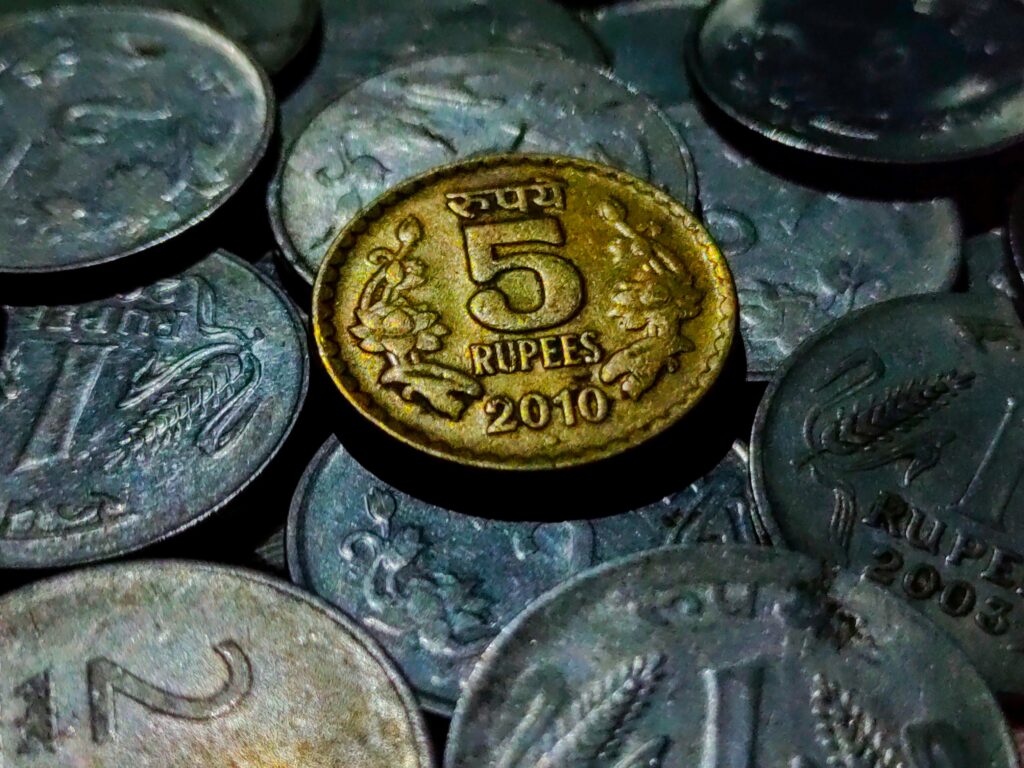The Lydian Stater marks a revolutionary moment in economic history as the world’s first standardized coin, introduced in the Kingdom of Lydia (modern-day western Turkey) around 650-600 BCE.1
This innovation eliminated the need to weigh precious metals for every transaction, fundamentally transforming commerce and establishing principles that continue to govern monetary systems today.
Key Takeaways
- The first true coins were created in Lydia under King Alyattes around 630 BCE
- Made from electrum, a natural alloy of gold (54%) and silver (44%)
- Featured distinctive lion imagery representing the Lydian royal dynasty
- Established the world’s first bimetallic system under King Croesus
- Transformed ancient commerce by eliminating weighing in every transaction
Origin of the First True Coinage
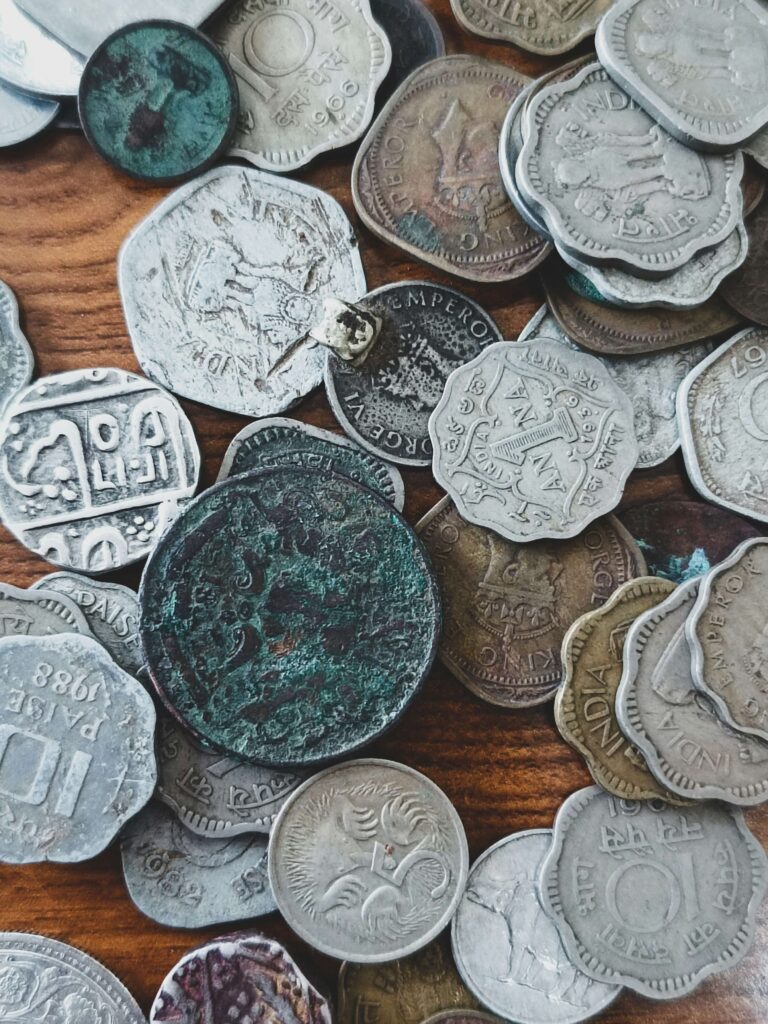
The birth of standardized coinage occurred in the kingdom of Lydia during a period of exceptional prosperity and commercial activity. Greek historian Herodotus credited the Lydians as “the first people to strike and use coinage of silver and gold.”
However, archaeological evidence has refined our understanding of these earliest monetary instruments. Modern research dates the first Lydian coins to approximately 630 BCE, during the reign of King Alyattes of the Mermnad dynasty.2
What made these coins revolutionary wasn’t simply their physical form but the conceptual innovation they represented.
For the first time, a government guaranteed the value of a piece of metal through official stamps, eliminating the need to weigh precious metals during every transaction.3
This simple yet profound shift accelerated commerce and fundamentally changed how people conceptualized value and exchange.
The earliest coins were hand-struck using a die-and-punch technique that left characteristic marks: detailed imagery on the obverse side and distinctive incuse squares on the reverse. 4
This manufacturing process required considerable skill to maintain consistent weights and quality across thousands of coins.
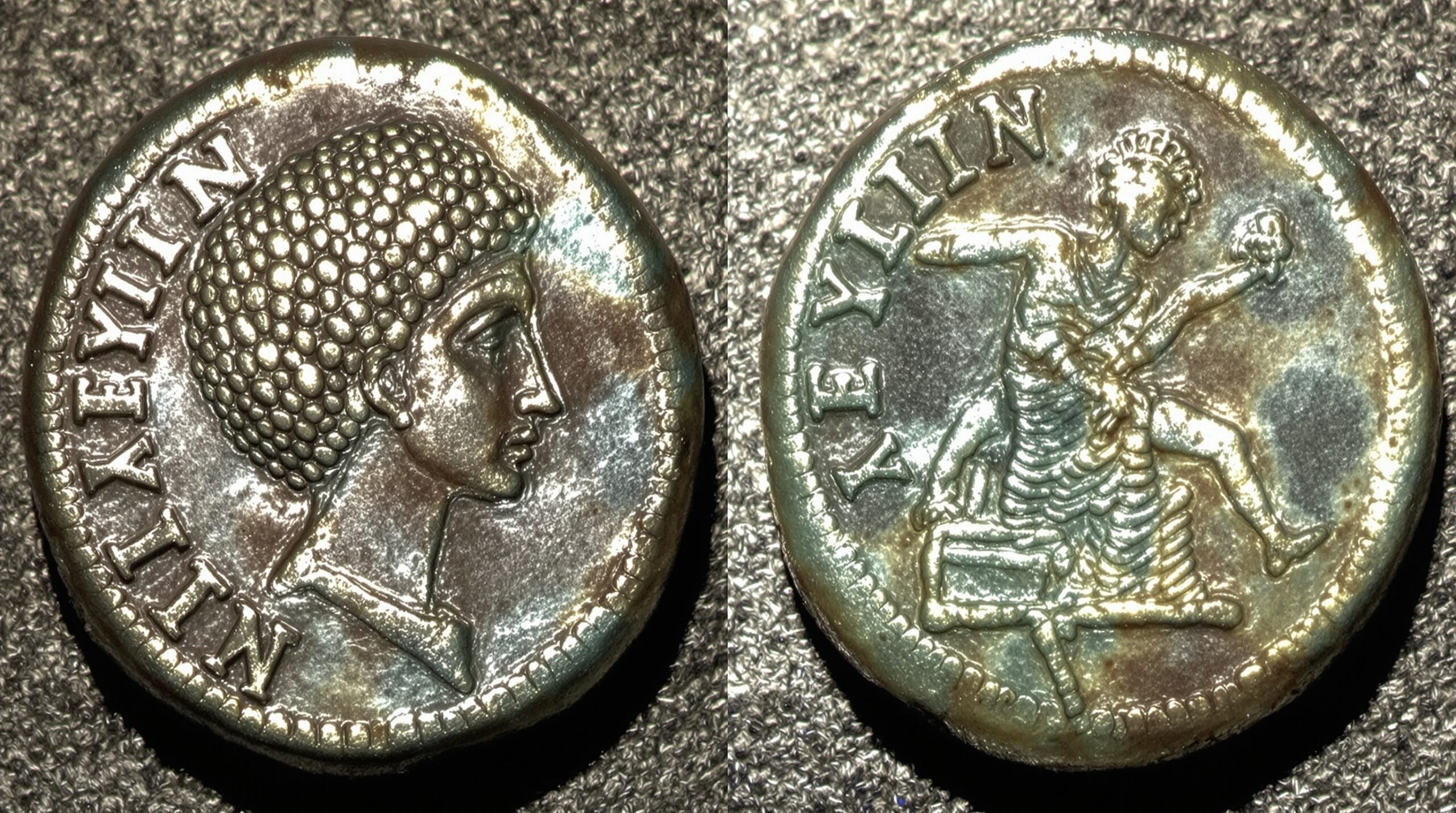
The Kingdom of Lydia: Geographical Advantage and Natural Resources
Lydia’s position in western Anatolia provided the perfect conditions for monetary innovation.
The kingdom occupied strategic territory connecting major trade routes between Asia and the Mediterranean, placing it at the crossroads of commercial and cultural exchange.5
Its capital city, Sardis, stood at the intersection of major trade routes in the fertile Hermus River valley, creating a natural hub for economic activity.
The region’s natural resources played a crucial role in enabling coinage development.
Most famously, the gold-bearing sands of the legendary Pactolus stream provided abundant precious metal that became the foundation of Lydian wealth.6
According to ancient tradition, King Midas bathed in this stream to rid himself of his golden touch, which is why its waters are said to carry gold particles.
Manufacturing Process and Technical Innovation
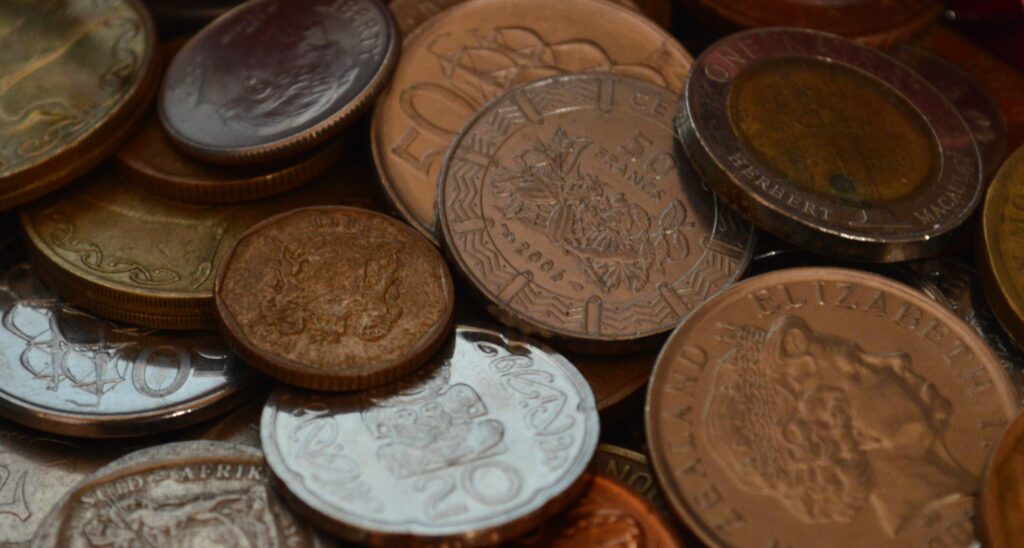
The earliest Lydian coins were crafted from electrum, a naturally occurring alloy containing approximately 54% gold and 44% silver with trace amounts of other metals.7
This distinctive pale yellow material provided both beauty and durability, essential qualities for a circulating medium of exchange.
Coin production involved a surprisingly sophisticated manufacturing process. Artisans created metal blanks of precise weight, then placed them between two dies and struck them with considerable force.
This technique required specialized skills to ensure consistent weight standards across thousands of coins, even for the smallest denominations weighing less than a gram.
A major technological breakthrough occurred under King Croesus (ruled 560-546 BCE), who introduced the world’s first bimetallic currency system.
By developing methods to separate the gold and silver in natural electrum, Lydian metallurgists created pure gold and silver coins with established exchange rates. This innovation demonstrated remarkable technical sophistication and understanding of monetary principles.8
Archaeological evidence from Sardis reveals the industrial scale of Lydian precious metal processing. The refinery complex discovered at the Pactolus North site included specialized workshops for separating gold and silver, confirming the advanced metallurgical knowledge that supported the kingdom’s monetary innovations.
Design Elements and Royal Symbolism
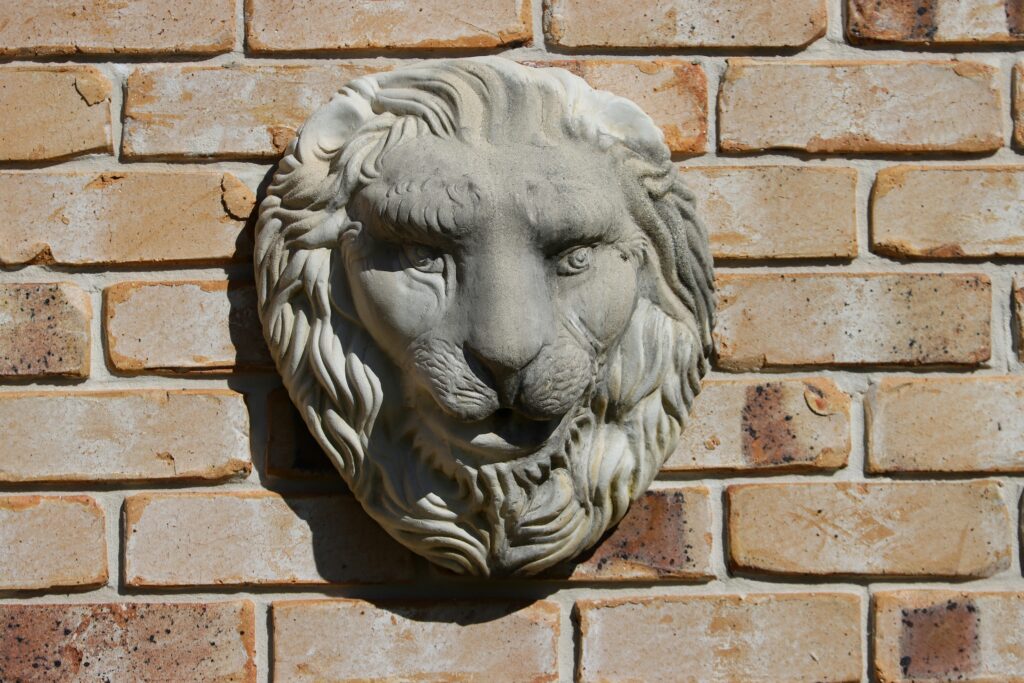
The imagery on Lydian coins communicated powerful messages about royal authority and legitimacy. The most recognizable design featured a lion’s head with a distinctive stylized sunburst, directly connecting the currency to the Lydian royal house. 9
The lion served as the primary symbol of the Mermnad dynasty, appearing throughout royal iconography.
Later coins under King Croesus displayed the confronting lion and bull motif that became the defining characteristic of Croeseid coins.10
This sophisticated design featured the foreparts of a lion facing a bull, representing the capital city of Sardis, while conveying deeper symbolic meaning about royal power.
In ancient Near Eastern iconography, the lion traditionally represented divine kingship and celestial authority, while the bull symbolized earthly power and agricultural fertility.
This confrontation between powerful animals conveyed the king’s role as mediator between the divine and earthly realms, thereby legitimizing his authority to issue currency.11
Some early coins bore inscriptions stating “I am the signet of Phanes” or “I am [the seal] of Kukas,” explicitly identifying them as official seals of particular authorities. These represent the earliest known use of written language on coins and establish the fundamental principle that monetary value derives from governmental guarantee.
Revolutionary Weight Standards and Denominations
The Lydian monetary system introduced standardized weight units that formed the foundation for all subsequent ancient coinage.
The basic unit, called the “stater” (from Greek “that which balances scales”), weighed approximately 14.1 grams and provided the fundamental basis for calculating coin values.12
What made this system particularly sophisticated was its extensive range of fractional denominations. The Lydians created a precise mathematical sequence of smaller coins, including:
- 1/3 staters (trites) – approximately 4.7 grams
- 1/6 staters (hekte) – approximately 2.35 grams
- 1/12 staters (hemihekte) – approximately 1.18 grams
- Even smaller denominations down to 1/96 stater – approximately 0.15 grams13
The technical achievement represented by these smallest denominations cannot be overstated. Creating coins weighing less than one-sixth of a gram while maintaining consistent standards required exceptional precision and quality control, demonstrating the remarkable sophistication of Lydian minting operations.
Under King Croesus, the system evolved further with the introduction of a bimetallic standard. Initial gold coins weighed 10.7 grams, while silver maintained the same weight. This was later refined to establish a convenient 1:10 exchange ratio between gold and silver, demonstrating sophisticated understanding of international metal values and trade requirements.
Transformation of Ancient Commerce
The introduction of standardized coinage fundamentally transformed ancient economic practices. Before this innovation, merchants conducted business by weighing precious metals for every transaction and performing tests to verify purity. Lydian coins eliminated these cumbersome processes, allowing traders to simply count currency units rather than weighing them.
This acceleration of commerce had far-reaching consequences. Merchants could now calculate profit margins with greater precision, plan inventory investments based on consistent pricing, and engage in more sophisticated financial practices. Fixed pricing for goods and services replaced the variable rates of barter-based systems, reducing transaction costs and increasing market efficiency.
The standardization of currency values created new possibilities for economic organization that extended beyond simple transactions. According to Herodotus, the Lydians were among the first peoples to establish permanent retail shops, made possible by the predictable values their coinage system provided.
Military and administrative applications provided additional incentives for adopting standardized coinage. Paying soldiers, collecting taxes, and managing government finances all became significantly more efficient with standardized coins of known value, contributing to the rapid spread of this innovation throughout the ancient world.
Archaeological Discoveries and Modern Analysis
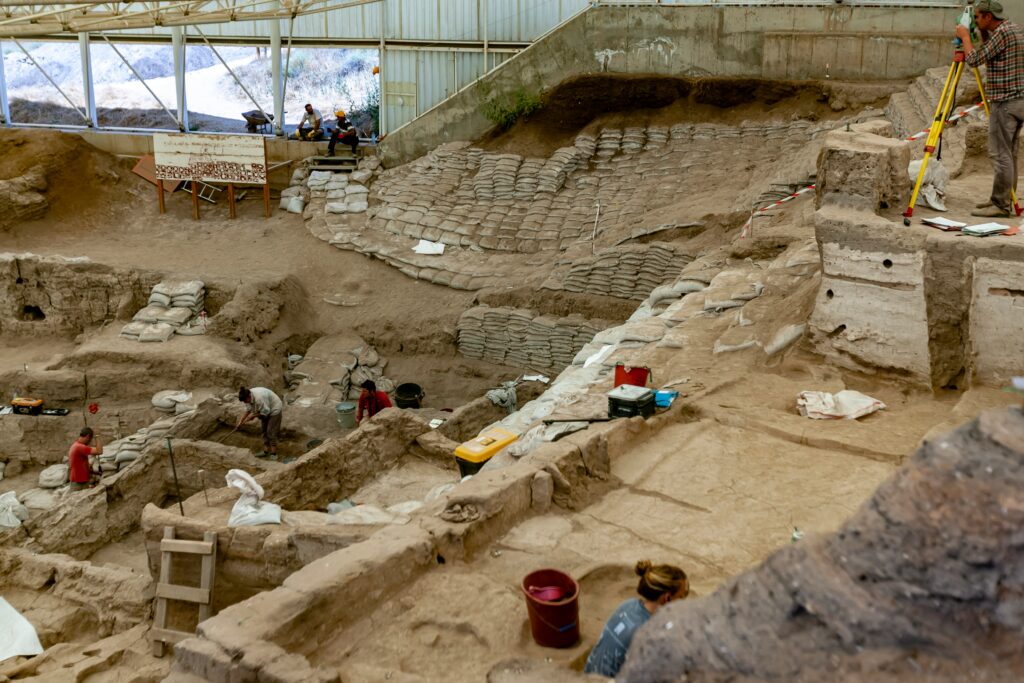
Recent archaeological discoveries have dramatically enhanced our understanding of Lydian coinage. During the 2021 excavation season at Sardis, archaeologists uncovered nine silver Croeseid coins directly associated with the Persian conquest of 547 BCE. 14
These coins were found with the remains of an individual who likely died defending the royal palace during the final battle, providing invaluable context for understanding their use and significance.
Scientific analysis of Lydian coins has revealed surprising complexities in their composition. Modern examination of natural gold from streams around Sardis shows that the ore contains virtually no silver, contradicting assumptions about electrum sources. This suggests that artificial alloying may have been more common than previously recognized, raising important questions about Lydian metallurgical capabilities.
Excavations at the Pactolus North site uncovered an extensive gold refinery complex that processed raw materials for the Lydian monetary system.
This industrial facility included specialized workshops for separating gold and silver, demonstrating that Lydian coinage production operated at a scale and level of technical sophistication previously underestimated by scholars.15
Findings from across the ancient Mediterranean world confirm the rapid spread and adoption of Lydian monetary innovations. Within decades of their introduction in Lydia, similar coinage systems appeared in Greek city-states, Persian territories, and other civilizations, each adapting the basic principles to local conditions and requirements.
Enduring Legacy in Modern Monetary Systems
The fundamental principles established by Lydian coinage continue to influence modern monetary systems worldwide. The concept of government-backed currency, first implemented by King Alyattes around 650 BCE, remains the foundation of contemporary fiat money systems, where value derives from governmental guarantee rather than intrinsic precious metal content.
The bimetallic system developed under Croesus provided the direct prototype for gold and silver standards that dominated international finance until the twentieth century. The careful attention to exchange rates and international metal values demonstrated sophisticated understanding of monetary policy principles that influenced currency systems throughout history.
Design elements of Lydian coinage established artistic and communicative traditions that continue to characterize modern currency. The use of governmental symbols to convey authority and legitimacy, first implemented with the Lydian lion design, remains standard practice in contemporary coin and banknote design.
Perhaps most significantly, the Lydian innovation recognized that monetary value could be based on conventional acceptance rather than purely intrinsic worth. This insight anticipated key concepts of modern monetary economics regarding the nature of money and value, providing the conceptual foundation for the fiat currency systems that dominate global finance today.
Footnote
- The Importance of the Lydian Stater as the World’s First Coin, Accessed September 10, 2025 ↩︎
- The Coins of Sardis, Accessed September 10, 2025 ↩︎
- Lydian Stater: The World’s First Standardized Coinage. Accessed September 10, 2025 ↩︎
- Lydian Electrum. Accessed September 10, 2025 ↩︎
- The Importance of the Lydian Stater as the World’s First Coin. Accessed September 10, 2025 ↩︎
- River Pactolus in Greek Mythology. Accessed September 10, 2025 ↩︎
- Croeseid. Accessed September 10, 2025 ↩︎
- Midas Accessed September 10, 2025 ↩︎
- Early Lydian Coinage and Chronology. Accessed September 10, 2025 ↩︎
- Croeseid. Accessed September 10, 2025 ↩︎
- Croeseid. Accessed September 10, 2025 ↩︎
- Coins of Sardis, Accessed September 10, 2025 ↩︎
- The Importance of the Lydian Stater as the World’s First Coin, Accessed September 10, 2025 ↩︎
- Sardis, 2021, Nicholas Cahill. Accessed, September 10, 2025 ↩︎
- About Pactollus North. Accessed September 10, 2025 ↩︎


